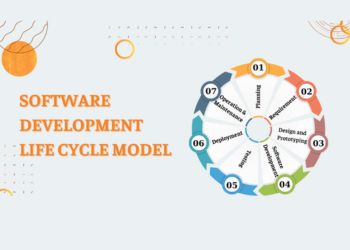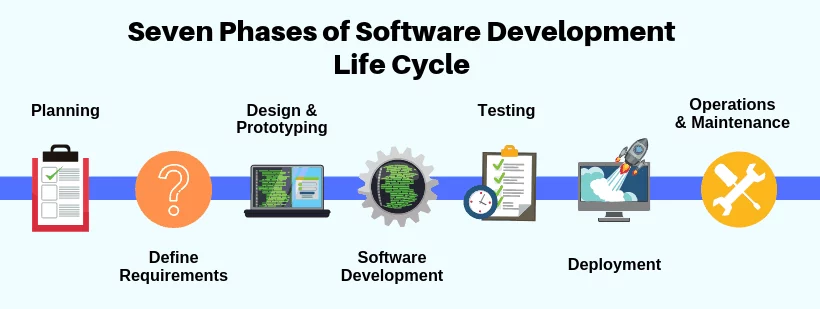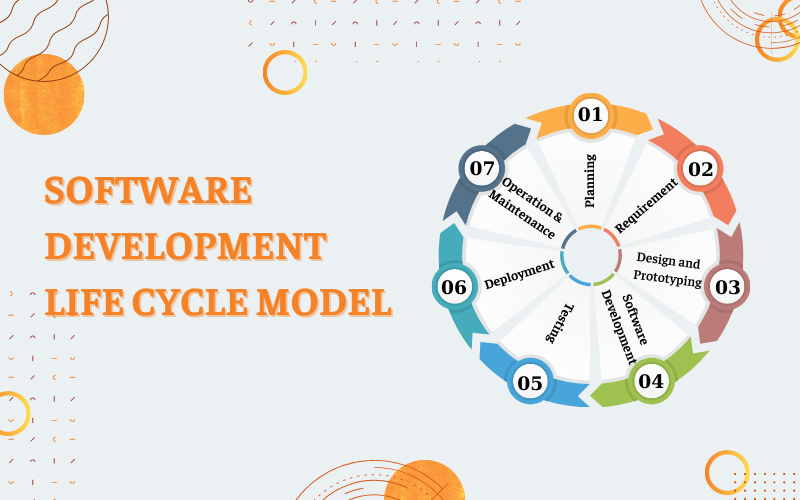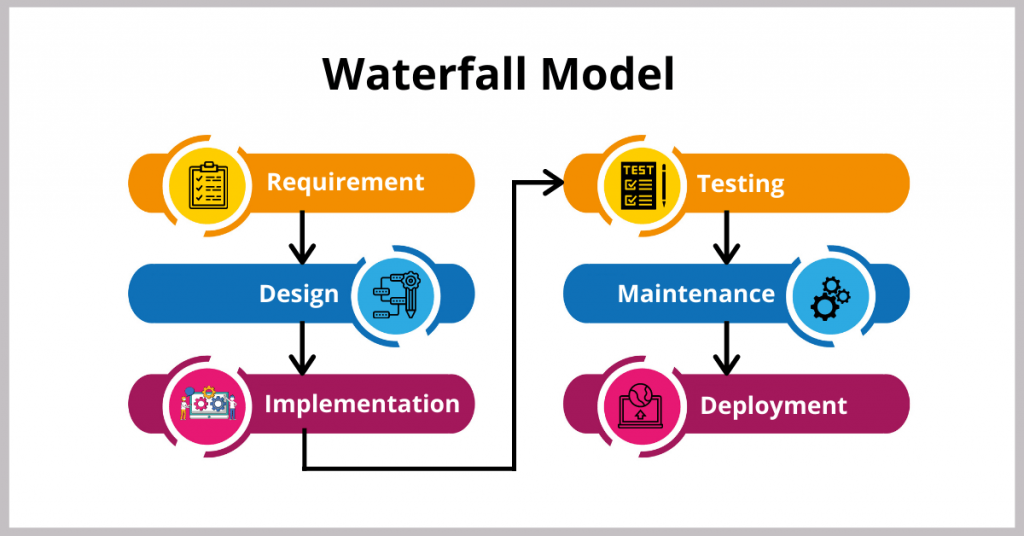What is Software Development Life Cycle? Phases and Model

In today’s digital age, software is the backbone of nearly every facet of our lives. From mobile apps that help us stay connected to complex systems that power industries, software development plays a critical role in shaping our world. Behind every successful software application is a well-structured and organized approach known as the Software Development Life Cycle (SDLC). In this article, we’ll dive deep into SDLC, exploring its phases, processes, and various models that guide the creation of software applications.
What is the Software Development Lifecycle?
The Software Development Life Cycle (SDLC) is a systematic and structured approach to software development. It provides a roadmap for creating software applications, ensuring that projects are completed efficiently, on time, and within budget. SDLC encompasses a series of phases, processes, and models that guide developers, project managers, and stakeholders through the entire software development journey.
SDLC is essential because it brings order and discipline to the inherently complex and creative process of software development. Without a well-defined approach, projects can easily go off track, leading to delays, budget overruns, and unsatisfactory outcomes.
7 Phases of Software Development Life Cycle

SDLC consists of several distinct phases, each with its specific objectives and activities. While the exact number and names of these phases can vary depending on the chosen SDLC model, the core phases remain consistent across most methodologies. Let’s explore each of these phases in detail:
1. Requirements Gathering and Analysis
The first phase of SDLC involves understanding and documenting the project’s requirements. During this phase, project stakeholders, including clients, end-users, and development teams, collaborate to identify and define the software’s functional and non-functional requirements.
Key Activities:
- Conduct interviews, surveys, and workshops with stakeholders to gather requirements.
- Create detailed requirement documents, including user stories, use cases, and system specifications.
- Prioritize and validate requirements to ensure they align with the project’s goals.
2. Planning & Prototyping
In the planning phase, project managers and teams create a comprehensive project plan. This plan outlines the scope, timeline, resource allocation, and budget for the software development project. It serves as a roadmap for the entire project.
Key Activities:
- Define project scope and objectives.
- Create a project schedule, including milestones and deadlines.
- Allocate resources, such as developers, testers, and infrastructure.
- Develop a budget that covers all project-related costs.
3. Design
Once the project is well-defined and planned, the design phase begins. In this phase, software architects and designers create detailed specifications for the software’s structure and functionality. This includes designing the user interface, database schema, and overall system architecture.
Key Activities:
- Create high-level and low-level design documents.
- Develop wireframes, mockups, and prototypes for the user interface.
- Define the software’s data model and database schema.
- Establish coding standards and guidelines for developers.
4. Implementation (Coding)
The implementation phase is where the actual coding of the software takes place. Developers write, test, and integrate the code according to the design specifications. This phase is often seen as the heart of the SDLC, as it transforms the conceptual design into a tangible software product.
Key Activities:
- Write code following the specified design and coding standards.
- Perform unit testing to identify and fix bugs at the code level.
- Collaborate with other team members to integrate code modules.
- Maintain version control to track changes and revisions.
5. Testing
Quality assurance is a critical aspect of SDLC. The testing phase involves thoroughly examining the software to identify and rectify defects, ensuring that it meets the specified requirements and functions correctly.
Key Activities:
- Conduct various types of testing, including unit testing, integration testing, system testing, and user acceptance testing.
- Create test cases and scenarios to validate each aspect of the software.
- Document and report defects, and work with developers to resolve them.
- Perform regression testing to ensure that new changes do not introduce new issues.
6. Deployment (or Implementation)
Once the software successfully passes testing and quality assurance, it’s ready for deployment to the production environment. This phase involves making the software accessible to end-users or customers.
Key Activities:
- Install and configure the software on production servers.
- Monitor the deployment process to ensure it goes smoothly.
- Conduct user training and provide documentation if necessary.
- Set up ongoing maintenance and support processes.
7. Maintenance and Support
The final phase of SDLC is maintenance and support. In this ongoing phase, developers and support teams monitor the software in the production environment, addressing any issues that arise, making updates, and enhancing the software as needed.
Key Activities:
- Address and resolve reported defects and issues.
- Implement software updates and enhancements based on user feedback and changing requirements.
- Perform routine maintenance tasks to ensure the software’s stability and security.
- Provide customer support and assistance as required.
SDLC Models & Methodologies Explained
While the core phases and processes of SDLC remain consistent, various SDLC models offer different approaches to managing and executing these phases. The choice of an SDLC model depends on factors such as project complexity, requirements volatility, timeline, and organizational preferences. Here are some of the most commonly used SDLC models:
1. Waterfall Model
The Waterfall model follows a linear and sequential approach, with each phase completed before moving on to the next. It is well-suited for projects with well-defined and stable requirements. However, it can be less flexible in accommodating changes once a phase has begun.
Advantages:
- Clear project milestones.
- Well-defined requirements.
- Predictable timeline and budget.
Challenges:
- Limited flexibility for changes.
- Testing and user feedback occur late in the process.
2. Agile Model
Agile is an iterative and flexible approach that divides the project into smaller increments or “sprints.” It encourages collaboration, adaptability, and customer feedback throughout the development process. Agile methodologies include Scrum, Kanban, and Extreme Programming (XP).
Advantages:
- Frequent collaboration and feedback.
- Adaptability to changing requirements.
- Delivering working software in shorter cycles.
Challenges:
- Requires active and continuous client involvement.
- May lack a well-defined project plan.
3. Iterative Model
The Iterative model emphasizes repeated cycles of development, testing, and refinement to improve the software progressively. Each iteration builds upon the previous one, allowing for incremental enhancements.
Advantages:
- Early delivery of basic functionality.
- Flexibility for changes and improvements.
- Continuous feedback and quality assurance.
Challenges:
- May require more time and resources.
- Complexity increases with each iteration.
4. Spiral Model
The Spiral model combines elements of both the Waterfall and iterative models. It emphasizes risk management and allows for multiple iterations. Each cycle in the spiral represents a phase of the project, including planning, risk analysis, engineering, and testing.
Advantages:
- Rigorous risk assessment and mitigation.
- Continuous refinement and adaptation.
- Well-suited for complex and long-term projects.
Challenges:
- Increased project complexity.
- Potentially longer development timelines.
5. V-Model (Verification and Validation Model)
The V-Model is an extension of the Waterfall model, emphasizing the relationship between each development phase and its corresponding testing phase. It places a strong focus on verification (ensuring that each development phase meets its requirements) and validation (ensuring that the software meets user needs).
Advantages:
- Emphasizes testing and quality assurance.
- Clear alignment of testing with development phases.
- Well-suited for critical and regulated industries.
Challenges:
- Limited flexibility for changes after development begins.
- Extensive documentation and testing efforts.
6. DevOps
DevOps is not a traditional SDLC model but rather a cultural and operational approach to software development and IT operations. It emphasizes collaboration between development and IT operations teams to automate and streamline the software delivery process, aiming for continuous integration and continuous delivery (CI/CD).
Advantages:
- Rapid and automated software deployment.
- Enhanced collaboration between development and operations.
- Improved efficiency and quality.
Challenges:
- Requires a cultural shift and organizational changes.
- Complex integration and automation processes.
Key Features of Software Development
Software development is a way to distinguish brands and gain a competitive edge. You must be proficient in the technologies and techniques to speed up software deployment, quality, and efficacy.
- Artificial intelligence (AI), or artificial decision-making, is software that can imitate human decision-making and learning. Developers and businesses have the chance to disrupt markets and offer services and products that are ahead of their competitors by using neural networks, machine learning and natural language processing.
- Cloud-native Development: Cloud-native is creating applications that exploit cloud environments. A cloud-native app is made up of discrete, modular components called microservices. These components can be integrated into any cloud environment. These microservices are used as building blocks and are usually packaged in containers. This architecture allows cloud-native apps to increase application performance, flexibility, and extensibility.
- Cloud-based software development: Organizations also look to the cloud for cost savings and improved resource management. The cloud can be used as an integrated development environment (IDE) or a platform (PaaS). Cloud-based development environments can support coding, design integration, and testing. You can also access APIs, DevOps, microservices and other development tools and services.
- Blockchain: Blockchain is a digitally linked, secure ledger that eliminates risk and vulnerability from banks, regulators, and other intermediaries. Blockchain is changing how businesses operate by allowing them to free up capital, accelerate processes, lower transaction costs, and other benefits. Blockchain offers tremendous opportunities for software development. Developers use distributed ledgers and open-source Hyperledger (the link is outside bestarion.com). Technology to transform the way businesses work.
- Low code: Forrester describes low code as “Products and/or services for application development that use visual, declarative methods instead of programming and are made available to customers at low or no cost in money and training. In other words, it is a development technique that reduces the need to code and allows non-coders, or citizen developers, to quickly build or assist with building applications at lower costs.
- Analytics: By 2020, the annual demand for data scientists, developers and engineers will exceed 700,000. This demand is a sign of how crucial it is for companies they gain insight and value through the explosion in data. Software developers are now incorporating advanced analytics capabilities in their applications. Cloud-based APIs and services made possible by cloud computing make it easier to explore data, automate predictive analysis and create dashboards that provide new insights and improve decision-making.
- Model-Based Systems Engineering (MBSE: Software modelling languages are used in MBSE to conduct early prototyping, simulation, and analysis of software designs for validation. MBSE allows you to analyze and develop project requirements and build strategies quickly.
- Mobile: Software developers must be able to create mobile apps that have deep connections with data. This will enrich and enhance user experiences. Forrester found that customers’ interactions with brands are influenced by how they interact with digital/mobile customer data.
Best Practices Of Software Development
There are a few other valuable techniques, models and stages of software development. These can be used during any stage of the development process.
Source Control
Source Control is a security plan that protects your working code. Source Control is a security plan that secures your working code. It involves keeping it in one location with log access and secure access. It could be a physical space where files can be stored and accessed from a single room within the building. This could be a virtual space that allows users to log in using an encrypted connection to a cloud development environment.
Source Control applications also include a change management system that allows you to track the work of individuals and teams. Backup systems are essential for storing development progress.
Continuous Integration
Continuous Integration was born out of the need to avoid making mistakes. Continuous Integration works to ensure that each component is compatible throughout the entire development cycle. Before CI, teams could build their projects. When developers merged the applications, this created significant problems. Continuous Integration helps prevent duplication of work and conflicts by ensuring that all teams use the same programming languages and libraries.
SDLC Management Systems
Each phase of the software development cycle is controlled and managed by a software development cycle management system. Each stage, as well as the entire project, benefits from management systems. They also include methods for analytics, bug tracking, and task management. These measurements, also known as key performance indicators (KPIs), can be utilized to improve areas of the cycle that aren’t doing well.
Conclusion
The Software Development Life Cycle (SDLC) is a comprehensive framework that guides the creation of software applications, ensuring efficiency, quality, and successful project outcomes. Understanding the phases, processes, and models of SDLC is crucial for software developers, project managers, and stakeholders alike.
The choice of an SDLC model depends on the specific project requirements, objectives, and constraints. Whether following a Waterfall approach for well-defined projects or embracing Agile methodologies for adaptability, SDLC provides a structured path to navigate the complex world of software development.
In today’s dynamic and fast-paced technological landscape, SDLC continues to evolve, with organizations adapting their approaches to meet the ever-changing demands of software development. By selecting the right SDLC model and adhering to best practices, software development teams can deliver high-quality software that meets user needs and drives innovation in the digital era.



